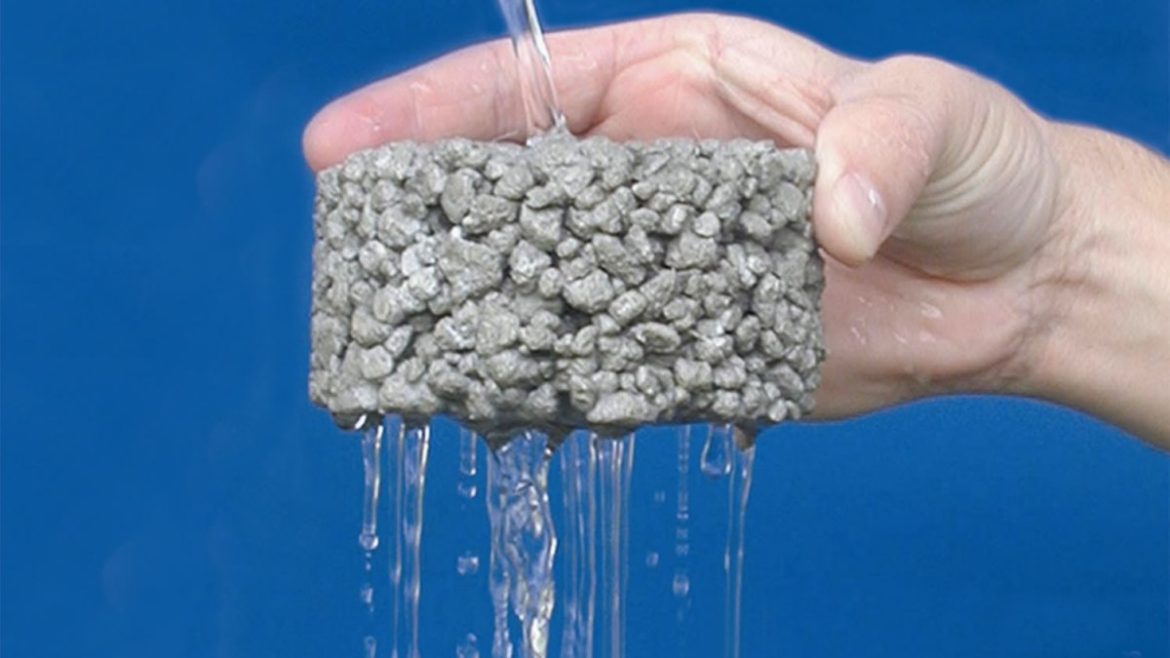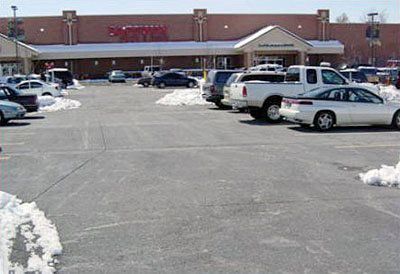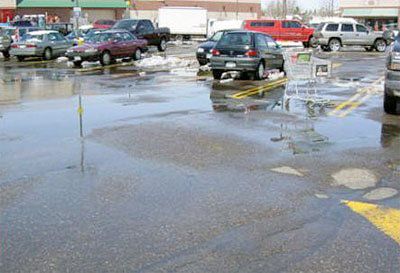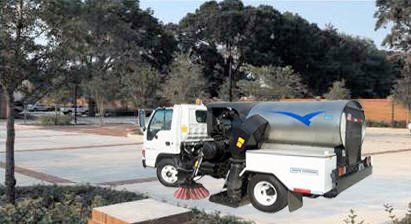Pervious Concrete Pavements
Pervious concrete pavement is a unique and effective means to address important environmental issues and support green, sustainable growth.

Service overview
Pervious concrete pavement is a unique and effective means to address important environmental issues and support green, sustainable growth. By capturing stormwater and allowing it to seep into the ground, porous concrete is instrumental in recharging groundwater, reducing stormwater runoff, and meeting U.S. Environmental Protection Agency (EPA) stormwater regulations. In fact, the use of pervious concrete is among the Best Management Practices (BMPs) recommended by the EPA — and by other agencies and geotechnical engineers across the country — for the management of stormwater runoff on a regional and local basis.
Details
This pavement technology creates more efficient land use by eliminating the need for retention ponds, swales, and other stormwater management devices. In doing so, pervious concrete has the ability to lower overall project costs on a first-cost basis. In pervious concrete, carefully controlled amounts of water and cementitious materials are used to create a paste that forms a thick coating around aggregate particles. A pervious concrete mixture contains little or no sand, creating a substantial void content. Using sufficient paste to coat and bind the aggregate particles together creates a system of highly permeable, interconnected voids that drains quickly.
Typically, between 15% and 25% voids are achieved in the hardened concrete, and flow rates for water through pervious concrete are typically around 480 in/hr (0.34 cm/s, which is 5 gal/ft²/ min or 200 L/m²/min), although they can be much higher. Both the low mortar content and high porosity also reduce strength compared to conventional concrete mixtures, but sufficient strength for many applications is readily achieved. While pervious concrete can be used for a surprising number of applications, its primary use is in pavement. This site focuses on the pavement applications of the material, which also has been referred to as porous concrete, permeable concrete, no-fines concrete, gap-graded concrete, and enhanced-porosity concrete.
The Benefits Of Pervious Concrete
The following photos show typical comparisons between traditional Asphalt (left) or Concrete versus Pervious Concrete (right). Both parking areas were plowed after a snow storm from the night before. Pervious Concrete allows air circulation that improves the melting of remaining snow and the drainage of water. This technology provides for a safe and improved surface that reduces risks to commercial and industrial properties.


Parking areas paved with pervious concrete reduce the need for large detention ponds, because the pavement itself acts as a detention area. Residential, Commercial or Industrial properties that use technology will spend fewer dollars on the labor, construction, and maintenance of detention ponds, skimmers, pumps, drainage pipes, and other stormwater management systems. Expensive irrigation systems can also be downsized or possible eliminated. By reducing runoff from paved areas, pervious concrete reduces the need for separate stormwater retention ponds and allows the use of smaller-capacity storm sewers. This may allow property owners to develop more area of property at a lower cost.
Stormwater Impact Fees
Many government agencies are now implementing stormwater impact fees for all impervious areas. As regulations further limit stormwater runoff, it is becoming more expensive for property owners to develop real estate, due to the size and expense of the necessary drainage systems. Pervious concrete can reduce these fees for the property owner by helping to minimize demands upon sewer systems.
Developers are using pervious concrete for parking areas in order to increase utilization of commercial properties. The land ordinarily devoted to costly stormwater management practices or compliance with maximum impervious area ordinances can now be developed or preserved, enhancing the bottom line.
Low Life-Cycle Cost
Maintenance
Concrete pavements have a significantly lower life-cycle cost than alternatives such as asphalt. Although the initial cost of pervious installation may be slightly higher, concrete saves money in the long run due to its superior durability and strength. It requires fewer repairs than asphalt, and has a longer overall lifespan as well.
Pervious concrete is also economical in that it minimizes the need for runoff retainers, reducing property costs. There is very little overproduction since it is made directly on-site and as-needed, and it can be recycled once it has reached the end of its life-cycle. Thus, pervious concrete is widely recognized as the lowest life-cycle cost option available for paving.
The majority of pervious concrete pavements function well with little or no maintenance. However, after repeated water flows, debris and residue may lodge within the top 1” to 1 ¼” of the void structure. Maintenance of pervious concrete pavement consists primarily of removing this debris and residue from the void structure to rejuvenate some of its original permeability. In preparing the site prior to construction, drainage of surrounding landscaping should be designed to prevent flow of materials onto pavement surfaces. Soil, rocks, leaves, and other debris may infiltrate the voids and hinder the flow of water, decreasing the utility of the pavement. Landscaping materials such as mulch, sand, and topsoil should not be on the concrete, even temporarily.

A specific frequency for maintenance cannot be stated because of differences in site conditions, water flow and traffic. One recommendation is to evaluate the permeability of the pavement immediately after construction using ASTM C1701 – Standard Test Method for Infiltration Rate of In-Place Pervious Concrete. Perform the test in several locations to establish a benchmark, and re-test at similar locations after a period of service to evaluate the rate of clogging of the pavement with time. This can be used as a basis to set a pavement maintenance schedule for that site.
Vacuuming annually or more often may be necessary to remove debris from the surface of the pavements. For best results over a large area, a regenerative vacuum sweeper should be used. Other cleaning options may include power blowing and pressure washing. Research has shown that using any of these methods to clean a clogged pervious concrete pavement can restore 80% to 90% of the original permeability in some cases.
Concrete Calculator
Please use this calculator to estimate the quantity of concrete required for your project.
